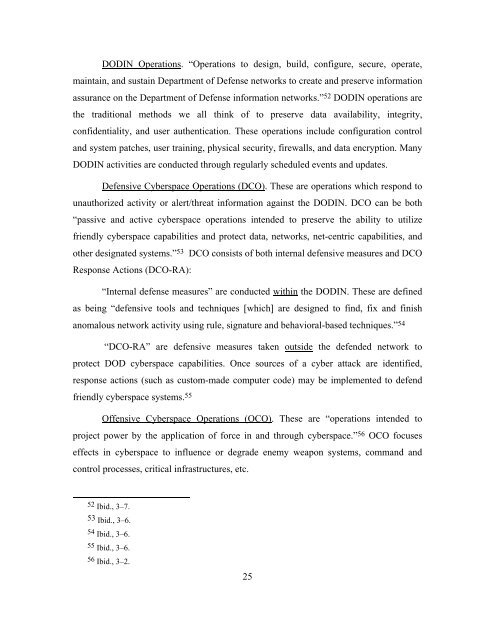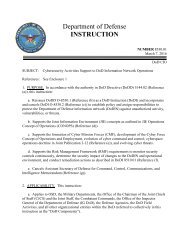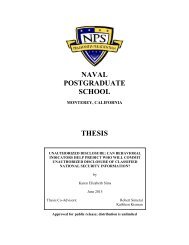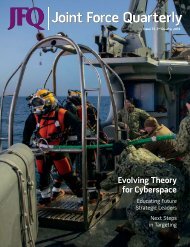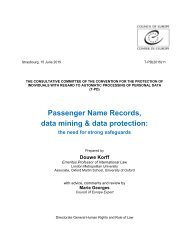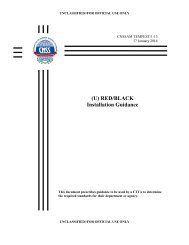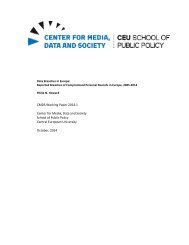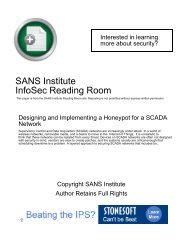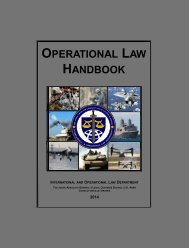SCHOOL THESIS
?view&did=788526
?view&did=788526
You also want an ePaper? Increase the reach of your titles
YUMPU automatically turns print PDFs into web optimized ePapers that Google loves.
DODIN Operations. “Operations to design, build, configure, secure, operate,<br />
maintain, and sustain Department of Defense networks to create and preserve information<br />
assurance on the Department of Defense information networks.” 52 DODIN operations are<br />
the traditional methods we all think of to preserve data availability, integrity,<br />
confidentiality, and user authentication. These operations include configuration control<br />
and system patches, user training, physical security, firewalls, and data encryption. Many<br />
DODIN activities are conducted through regularly scheduled events and updates.<br />
Defensive Cyberspace Operations (DCO). These are operations which respond to<br />
unauthorized activity or alert/threat information against the DODIN. DCO can be both<br />
“passive and active cyberspace operations intended to preserve the ability to utilize<br />
friendly cyberspace capabilities and protect data, networks, net-centric capabilities, and<br />
other designated systems.” 53 DCO consists of both internal defensive measures and DCO<br />
Response Actions (DCO-RA):<br />
“Internal defense measures” are conducted within the DODIN. These are defined<br />
as being “defensive tools and techniques [which] are designed to find, fix and finish<br />
anomalous network activity using rule, signature and behavioral-based techniques.” 54<br />
“DCO-RA” are defensive measures taken outside the defended network to<br />
protect DOD cyberspace capabilities. Once sources of a cyber attack are identified,<br />
response actions (such as custom-made computer code) may be implemented to defend<br />
friendly cyberspace systems. 55<br />
Offensive Cyberspace Operations (OCO). These are “operations intended to<br />
project power by the application of force in and through cyberspace.” 56 OCO focuses<br />
effects in cyberspace to influence or degrade enemy weapon systems, command and<br />
control processes, critical infrastructures, etc.<br />
52 Ibid., 3–7.<br />
53 Ibid., 3–6.<br />
54 Ibid., 3–6.<br />
55 Ibid., 3–6.<br />
56 Ibid., 3–2.<br />
25


